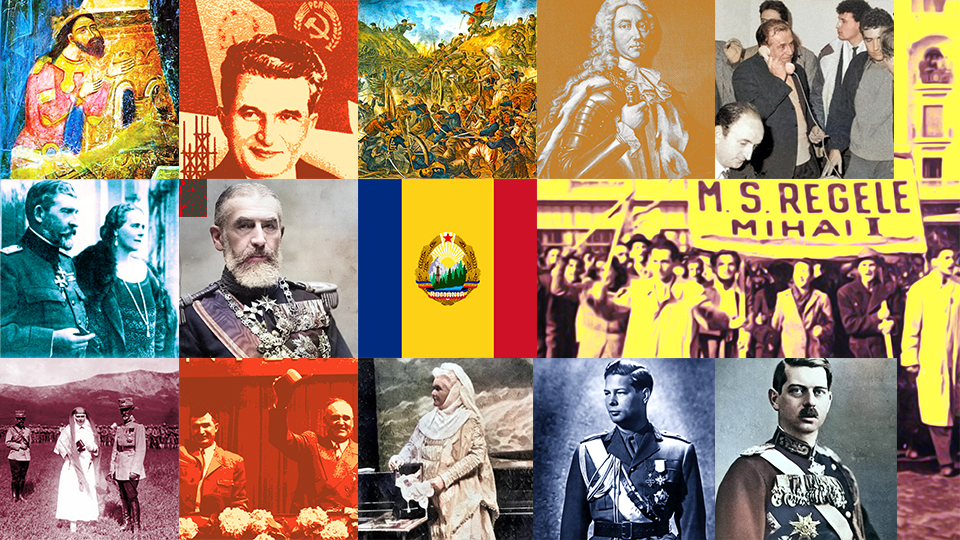100 years since the union of Bessarabia with Romania
On March 27th 1918, the Country Council, the legislative body of the Moldovan Republic or of Bessarabia as it is also known, that had been annexed by tsarist Russia in 1812, voted in favour of its union with Romania.

Steliu Lambru, 02.04.2018, 13:24
On March 27th 1918, the Country Council, the legislative body of the Moldovan Republic or of Bessarabia as it is also known, that had been annexed by tsarist Russia in 1812, voted in favour of its union with Romania. A historic injustice that took place 106 years before had thus been repaired. In the wake of the catastrophic situation caused by three years of war in Russia, which was also dealing with social unrest due to the failed reforms and incomplete modernization, the successive revolutions of 1917 – those in February-March and October-November – rekindled the hope for a new beginning.
Against this backdrop of social, political and economic instability, Russia’s political map suffered mutations. It saw the reemergence of older states, such as Poland, while some countries reaffirmed their new political identity or preferred to unite with neighboring states. Bessarabia was part of the last category, as it united with Romania. This move was masterminded by the country’s elites.
Historian Ioan Scurtu explains how these elites had formed: “Bessarabia’s political elite was mainly formed after 1900, especially after the Russian revolution of 1905, which was followed by a certain degree of tolerance for the peoples in the empire. That tolerance had materialized in a series of reforms that included the young people’s access to education and culture, of course not Romanian. Young Moldovans were now allowed to complete their studies in Russia. An elite was thus formed that played a major role in the process of developing the Romanians’ national conscience. Coming back to Bessarabia, the intellectuals started writing and printing various publications, which circulated illegally. A Bessarabian leader, Constantin Stere, who had served some time in a prison camp in Siberia for his nationalistic activity, made it back to Romania where he began promoting the idea of bringing young people from Bessarabia to study at the University of Iasi so that they may get a solid Romanian culture.”
However, great political transformations were carried out not only by intellectuals, but also by well-structured and disciplined entities like the country’s armed forces. Here is historian Ioan Scurtu again: “When the Russian revolution broke out in 1917, there had already been a Bessarabian intellectual elite. Adding to it was also the military. A war was being fought at that time, which Russia joined in July 1914. Of course, the young Bessarabians had been integrated into the Russian army. The revolution broke out in Petrograd in 1917 and a provisional government led by Prince Lvov came to power. Prince Lvov made two major decisions for the army. The first one was to give soldiers the right not to salute their superiors. That was quite an exceptional thing for a structure built above all on hierarchy and discipline. Consequently, servicemen started to set up the so-called soldiers’ committees, elect commanders from among their members and deny top brass authority, thus throwing the armed forces into complete disarray. The second measure was that troops in the Russian army could be organized on national criteria allowing troopers to leave the army barracks and form their own detachments and units, on national grounds. The Moldovan soldiers did exactly that thus becoming the extremely dynamic and active factor in the national movement because the provisional social-democratic government recognized the autonomous organization of the Russian territories on national grounds. So, the national movement emerged everywhere, in Finland, the Baltic States, Poland, and of course, Bessarabia.”
On March 27th Bessarabia’s legislative body voted in favor of the union with Romania. Out of its 135 members, 86 voted in favor, 3 voted against and 36 abstained. Some hinted that Romania had allegedly attempted to influence the voting.
Here is historian Ioan Scurtu debunking this myth: ”These legends are just that, as the documents clearly show the general state of mind at the time. In July 1917 an army congress decided the setting up of a Parliament structure, which they named The Country Council, and elections were held aimed at rendering the province autonomous with a view to its union with Romania. The voting process was held on categories of professionals, such as teachers, craftsmen, priests, students and servicemen who included in their programmes the province’s autonomy and its union with Romania. When the Country Council convened on November 21st 1917 the objective was already clear. The idea that someone had rigged the ballot is out of the question because the legislature was a pretty complicated structure, which made bribing very unlikely. Also worth noting was that the Country Council’s sessions unfolded in a positive manner of respect and understanding. One might also ask about the relatively large number of abstentions. Those who abstained were representatives of the national minorities but they didn’t actually stand against the union. Their representatives said they were sent to vote for the autonomy but that no consultations had been held regarding the union.”
March 27th 1918, the moment when Bessarabia united with the Romanian Kingdom, was the first in a series that gained momentum on December 1st 1918 when Greater Romania was formed after Transylvania, another Romanian territory, also joined in.





























